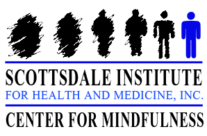
There’s a tendency to make mindfulness practice more complicated than it is. There’s a lot of reasons for this. Two that come to mind are 1. a lack of understanding of the process and 2. a tendency to think that the more words employed in teaching and writing the more “expert” it seems. In that case, it’s almost as if that person is getting paid by the word…which a lot of writers actually are. The more appropriate situation would be just the reverse…getting paid by how few words are used.
To me, the core of the practice is the attention being paid to the present moment through the medium of the breath, body, thoughts, emotions and 5 senses(the body). They are all interconnected but we are able to create loose categories when describing the details. When I look for the common denominator of all these I always seem to come back to the breath. I’ve seen amazing transformations while focusing simply on the breath. My instructions always include 1. breathing in and out through the nose, 2. sensing the movement of the belly and 3. embodying the attitudes of self compassion/acceptance and alert attention. While employing these instructions we fully experience the breath as it is in the moment without changing anything. These instructions are designed to counteract the results of breathing from chronic stress. Stress causes us to breathe from the chest and mouth which combined with a rapid, shallow breath limits the amount of oxygen coming into the body. This pattern of breathing also results in the continuation of being stuck in the stress cycle/fight, flight or freeze. It’s almost as if the body senses the irregular breathing and interprets it as being an indication that danger is still near resulting in a continuation of fight or flight. When the body senses the regular “normal” breathing pattern it interprets it as the danger being gone and it is safe to come out of fight or flight. I know this sounds a bit simplistic but it is the observation of many years of my own practice and the millions of people who have practiced over the centuries…..not to mention the “Johnny come lately” scientific studies which are abounding over the past thirty years.
The breath is a good reflection of what is going on with us. If we pay close attention to it we will learn a lot about ourselves. The breath is also a convenient bridge between the autonomic and central nervous systems. It is really part of both. It runs by itself(autonomic) and can be easily brought under conscious control(central). Overlapping as it does, it provides an opportunity for the unconscious and conscious parts of ourselves to partner in communication. This is a very good thing as it paves the way for an inner synchronicity that helps to keep the entire system in balance. So let’s pay homage to our friend the breath and greet it with full attention moment to moment.
